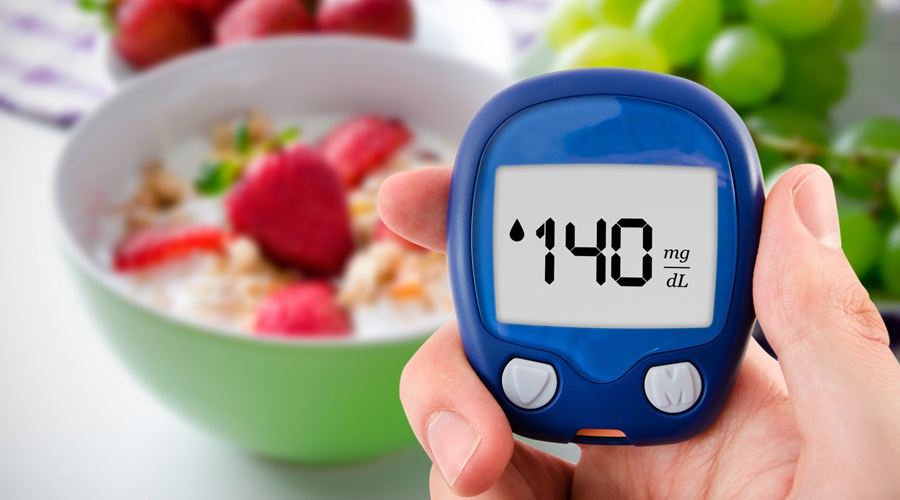For decades, avascular necrosis (AVN) of the femoral head was regarded as a degenerative...
7 Common Side Effects of Diabetes

Diabetes—an endocrine system disorder characterized by the body's inability to properly utilize insulin to maintain blood glucose levels—has many health side effects, and left untreated, can result in the development of a wide range of other diseases.
It's therefore vital to pay close attention to what your body is telling you, and undergo routine checkups on a regular basis. You may otherwise miss the warning signs, potentially jeopardizing your health.
Here are seven common diabetes-related side effects and diseases:
1. Foot Ulcers
Developing a diabetic foot ulcer is a common side effect among individuals with Type 1 and Type 2 diabetes. These non-healing wounds form on the bottom or side of a person’s foot, oftentimes becoming inflamed and infected. If not immediately treated, there’s a chance of more severe complications, including amputation. It is strongly recommended that those with diabetes pay close attention to their feet, taking notice of any redness, swelling, callusing, or discoloration that occurs. Recognizing these symptoms early on can prevent worsening of this condition, and result in effective treatment.
Hyperbaric Oxygen therapy is FDA approved to treat diabetic foot uclers. Learn more here.
2. Cardiovascular Disease
The risk of cardiovascular disease is elevated in those with diabetes. The American Heart Association (AHA) determines diabetes to be one of the seven major controllable risk factors for cardiovascular disease. While there are medications that can help to manage blood sugar levels, those with Type 2 diabetes are at an elevated risk of high blood pressure, abnormal cholesterol, obesity, physical inactivity, and uncontrolled blood sugar spikes—all of which directly affect heart health. The AHA also states that adults with diabetes are two to four times more likely to die from heart disease than adults without diabetes, exemplifying the seriousness of this condition and the importance of seeking early treatment.
3. Vision Impairment
According to the National Eye Institute (NEI), part of the federal government’s National Institutes of Health, there are two diabetic eye disorders one can develop: diabetic retinopathy and diabetic macular edema (DME). The former often causes vision impairment, while the latter develops from swelling around the retina. Similar to foot ulcers, early detection is the key to avoiding potentially permanent damage. However, as the NEI points out: “Because diabetic retinopathy,” in particular, “often lacks early symptoms, people with diabetes should get a comprehensive dilated eye exam at least once a year.”
4. Gum Disease
As the National Institute of Diabetes and Digestive and Kidney Diseases (NIDDK) explains: “When diabetes is not controlled, high glucose levels in your saliva help harmful bacteria grow.” This may cause gum and dental problems, including gingivitis, candidiasis, and periodontitis, or gum disease. Moreover, developing a condition, like gum disease, could make it more difficult for those with diabetes to control their blood glucose, as impaired dentition may limit the ability to comfortably chew a variety of foods. It is important for people with diabetes to practice good oral hygiene habits, such as thoroughly brushing your teeth and flossing every day, and keep watch for any signs of swollen and/or sensitive gums.
5. Fatigue
The 2010 report “Fatigue in Patients with Diabetes: A Review,” shared by the U.S. National Library of Medicine, explains that fatigue is a common side effect of diabetes, as well. This can make performing simple, daily tasks difficult. Your motivation will decline as a result of this extreme exhaustion. However, sleep oftentimes won’t make you feel much better, which could have other ramifications, such as a change in personality, or mood swings.
6. Stroke
People with diabetes are also at an increased risk of suffering a stroke. There are several mechanisms behind the cause of this association. One is a process called endothelial dysfunction, which involves inflammation and damage to the body’s arteries. In this case, the health and function of the arteries becomes compromised, leading to inflammation and stiffness and increasing the amount of atherosclerosis or plaques. With thicker plaques and inflexible arteries, the patient is at higher risk of a blockage or blot clot. Those with diabetes also have an elevated risk of high blood pressure, which concurrently raises the risk of a stroke.
7. Nerve Damage
The NIDDK explains that untreated diabetes can also cause various nerve disorders. The most common type of nerve damage occurs in the feet and hands (peripheral neuropathy), leading to decreased sensation, numbness, and sometimes pain in these areas. Nerves that regulate digestion, erectile function, blood pressure control, the bladder, and others can also be damaged. In fact, between 60 and 70 percent of those with diabetes develop some type of nerve damage.
Hyperbaric Oxygen Therapy for Diabetes
Hyperbaric oxygen therapy (HBOT) is a medical treatment that involves breathing pure oxygen in a pressurized chamber. The increased pressure allows more oxygen to dissolve into the blood plasma and travel to tissues throughout the body.
HBOT can help people with diabetes in a number of ways:
- Improved wound healing: Diabetes can damage the nerves and blood vessels in the feet and other parts of the body, which can lead to chronic wounds that are difficult to heal. HBOT can help to improve wound healing by increasing blood flow to the affected area and stimulating the growth of new blood vessels.
- Reduced risk of amputation: Diabetic foot ulcers are a major risk factor for amputation. HBOT can help to reduce the risk of amputation by promoting wound healing and reducing infection.
- Improved nerve function: Diabetes can also damage the nerves, which can lead to numbness, tingling, and pain. HBOT can help to improve nerve function by increasing blood flow to the nerves and stimulating the growth of new nerves.
- Reduced blood sugar levels: HBOT can also help to reduce blood sugar levels in people with type 2 diabetes. This is thought to be due to the fact that HBOT improves insulin sensitivity.
- Improved metabolic health: HBOT may help to improve metabolic health by increasing oxygen delivery to tissues, reducing inflammation, and promoting efficient energy metabolism. This can be beneficial for diabetics, who are at increased risk of developing metabolic disorders such as obesity, high blood pressure, and high cholesterol.
- Lowering inflammation: Chronic inflammation is a hallmark of diabetes and plays a role in the development of many of the complications associated with the disease. HBOT has been shown to reduce inflammation by suppressing the production of pro-inflammatory cytokines and increasing the production of anti-inflammatory cytokines. This can help to improve diabetic control and reduce the risk of complications.
- Protecting against cardiovascular disease: Diabetics are at increased risk of developing cardiovascular disease, which is the leading cause of death in people with diabetes. HBOT may help to protect against cardiovascular disease by improving blood vessel function and reducing inflammation.
- Improving cognitive function: Diabetes can also lead to cognitive impairment, such as memory loss and difficulty concentrating. HBOT has been shown to improve cognitive function in people with diabetes by increasing blood flow to the brain and promoting the growth of new neurons.
HBOT is generally safe and well-tolerated. However, it is important to talk to your doctor before undergoing HBOT, as there are some potential risks and side effects associated with the treatment.
Do you have diabetes? Receiving hyperbaric oxygen therapy may be able to heal foot ulcers and reduce the need for amputation and address other side effects of diabetes.
{Updated: October 17, 2023}

Written by Alan Katz, MD, FUHM, FACEP, FAAEM
Dr. Alan Katz, National Medical Director of Hyperbaric Medical Solutions (HMS), is double board certified in Emergency Medicine and Hyperbaric Medicine. He directs clinical operations, education and research initiatives, and the integration of other regenerative medicine therapies....
Read More



